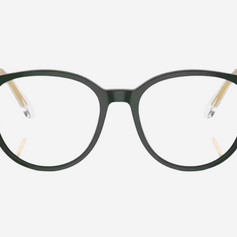Astigmatism is a condition in which rays of light from all directions are not focused at one point on the retina, which results in causing blurred vision. It occurs when the cornea is irregular in shape, or even the lens inside the eye is imperfect/cylindrical in shape. Astigmatism is common in most people at some extent. It doesn’t affect your vision if it’s in small amounts.
Generally speaking, the cornea and lens are smooth and are curved equally in all directions. As a result, the light rays focus sharply onto the retina at the back of your eye. If either cornea or lens are not smooth, the light rays doesn’t bend properly resulting in the distorted or blurred vision. In optical language it’s called ‘refractive error’.
Causes
Most of the time astigmatism develops because the radius of curvature of cornea is not equal in all directions. At birth, the cornea generally is a perfect sphere, but slowly it starts losing its spherical qualities. Astigmatism is caused by the alignment differences in the components of the eye.
Heredity also plays important role in the cause of astigmatism. Sometimes, astigmatism may be a result of eye injury or eye surgery.
Astigmatism is also caused by an eye condition called ‘Keratoconus’. In Keratoconus the cornea becomes very thin and cone shaped. Due to which the alignment of the eye gets affected and as a consequence high level of astigmatism develops. Large amount of astigmatism results in poor vision and this kind of astigmatism cannot be corrected through the eyeglasses. It can only be corrected through the specialty contact lenses, and may need a corneal transplant later.
Symptoms
- Distorted/Blurry Vision
- Headaches
- Eyestrain
- Discomfort in Eye
Diagnosis
Astigmatism can be diagnosed through regular comprehensive eye exam. With the eye exam your optometrist can determine if you have astigmatism. They will use these findings to determine the power/prescription for your eyes. And optometrist will also discuss the treatment options to correct the astigmatism.
Treatment
There are several options for the treatment of astigmatism.
- Eyeglasses – Generally eyeglasses are the most common kind of vision treatment that people use. The prescription for the eyeglass contains a special lens that compensates for the astigmatism.
- Contact Lenses – Some people prefer contact lenses over eyeglasses. Because they are worn directly in to eye, it may give clearer vision and wider field of view.
- Orthokeratology – In Orthokeratology or Ortho K patient wears rigid contact lenses to reshape the cornea. They are worn for a limited time period, for example overnight and then they remove them. Ortho K is not a permanent solution. It can a patient temporarily to obtain clear vision, but if the patient stops wearing the Ortho K lenses, their vision may get back to original condition.
- Laser and other eye surgery – Astigmatism can be corrected through the laser surgeries by reshaping the cornea. It can be done through LASIK (laser in situ keratomileusis) or PRK (photorefractive keratectomy).
You can have a consultation with the optometrist and the optometrist can help you pick the right treatment based on your needs and lifestyle.















